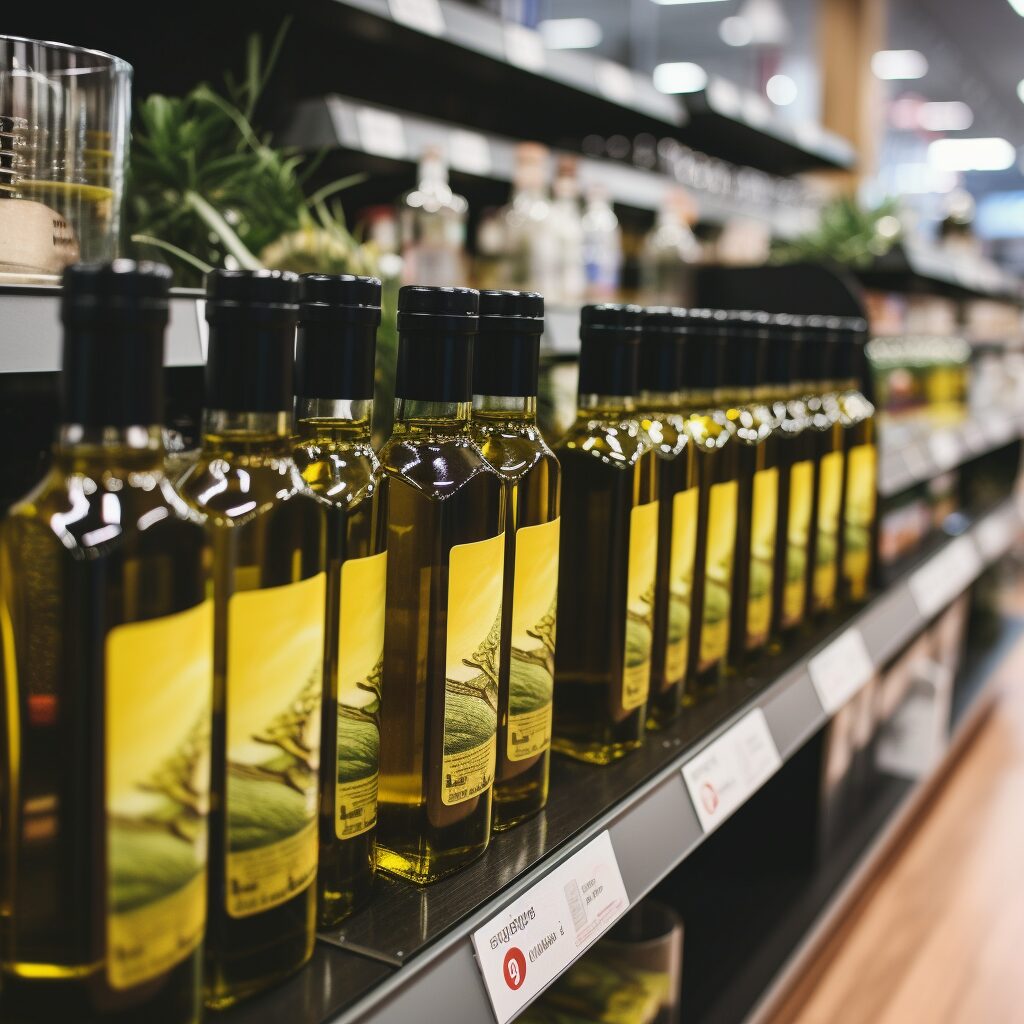Imagine strolling down the supermarket aisle, eyeing a glistening row of olive oil bottles, only to wonder: is this olive oil the real deal or a clever impostor? The world of olive oil is rife with mystery and misinformation, and discerning authenticity can feel like an epicurean detective case. In this article, we’ll unravel the enigma, guiding you through the oily waters to spot fake olive oil and ensuring that what you drizzle on your salad is nothing but the best.
1. The Great Label Deception
Labels can be misleading, and olive oil bottles are notorious for it. A common trick is labeling subpar oil as “extra virgin.” Remember, true extra virgin olive oil has specific sensory and chemical properties. According to Epicurious, authentic olive oil should include details like a harvest date and the producer’s name. Avoid vague descriptions and be wary of terms like “pure” or “light,” as they often indicate refined oils.
Another red flag is the country of origin. Oils claiming to be from traditional olive-growing countries like Italy might be imported from elsewhere. Check for certifications from recognized authorities like the EU or the California Olive Oil Council, as suggested by Brightland. These certifications indicate adherence to stringent standards and authenticity.
Lastly, don’t be swayed by fancy packaging. A pretty bottle doesn’t guarantee quality. What’s inside is what counts, so always read the label carefully.
2. Sensory Secrets: Taste and Smell
Our senses are powerful tools in spotting fakes. Real extra virgin olive oil should taste fresh, with a hint of fruitiness, bitterness, and a peppery finish. If your olive oil tastes dull, greasy, or waxy, it’s likely adulterated. As Kosterina highlights, authentic olive oil should smell fresh and faintly fruity. Trust your palate and nose – if something seems off, it probably is.
Conduct a simple taste test at home. Pour a small amount of oil into a glass and warm it with your hands. Swirl, sniff, then taste. Real olive oil will have a complex bouquet of scents and a balanced flavor profile.
Beware of an overly greasy or bland taste. These are telltale signs of an oil that’s been mixed with cheaper, lower quality oils.
3. Harvest Date: A Telltale Timestamp
One of the simplest yet most effective ways to gauge olive oil’s authenticity is by checking the harvest date. Authentic olive oil, as per Brightland’s advice, should be from the most recent harvest. This date is a stamp of freshness, unlike the arbitrary “best by” date. Olive oil doesn’t age like wine; it deteriorates. A recent harvest date ensures you’re getting the freshest, most flavorful oil.
Look for a specific harvest date rather than just a year. The more specific, the better. This detail shows that the producer is transparent about their product’s origin and quality.
Avoid oils without a harvest date. This omission is often a red flag that the oil is either old or its origins are dubious.
4. The Container Conundrum
Packaging matters. Real extra virgin olive oil should be stored in dark glass bottles or tin containers. Light and heat are the enemies of olive oil, causing it to degrade faster. Kosterina advises that oils stored in clear or plastic bottles are likely to be of lower quality. Dark containers protect the oil from light, preserving its flavors and health properties.
Also, check the bottle’s seal. A tightly sealed cap or a tamper-proof seal indicates care in packaging and a reduced risk of adulteration.
Beware of large, clear containers. These are not ideal for storing high-quality olive oil and often signify a product that isn’t what it claims to be.
5. Price Point Puzzles
Price can be an indicator, but it’s a tricky one. High-quality extra virgin olive oil, especially from early harvests requiring more labor, will naturally be more expensive. However, a high price tag isn’t a guaranteed authenticity stamp. According to Epicurious, don’t let fancy packaging or a hefty price tag fool you. It’s about the quality, not the cost.
Conversely, extremely low prices can be a red flag. Producing genuine extra virgin olive oil is a labor-intensive process, and if the price seems too good to be true, it probably is.
Balance is key. Look for moderately priced oils with other signs of authenticity, like a recent harvest date and proper packaging.
6. The Myth of the Fridge Test
There’s a popular myth that real olive oil solidifies in the fridge. However, this is unreliable, as explained by Food Renegade. Some fake oils still thicken in the fridge, and some genuine oils remain liquid due to their specific fatty acid composition. Don’t rely solely on this test. Instead, combine it with other methods like checking labels and tasting.
Remember, while the fridge test might give some clues, it’s not foolproof. The composition of olive oil varies greatly depending on the olive variety, harvest time, and processing methods.
When in doubt, use the fridge test as a starting point, but don’t let it be your deciding factor.
7. The Art of Knowing Your Source
The most reliable way to ensure you’re getting real olive oil is to know your source. Buy from trusted farmers, small co-ops, or companies that directly bottle their oil. As Food Renegade suggests, these sources are less likely to mix or adulterate their oils. They often provide detailed information about the olive variety, the production process, and even the farm’s location.
Consider buying online from reputable sources that work directly with family farms. These vendors often have certifications and are transparent about their sourcing and production practices. While supermarket shopping, opt for brands with a reputation for quality. Do some research beforehand to know which brands are trustworthy.

